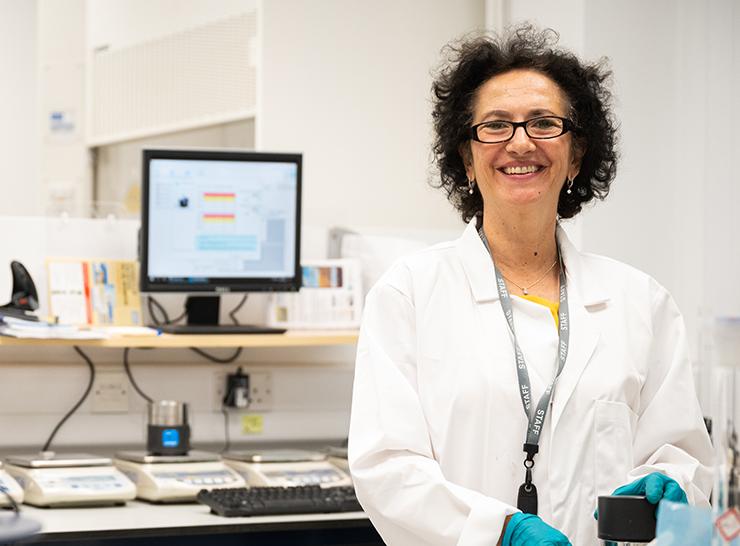Spanish to English translation
The anti-flu drugs could have consequences through wastewater
[Date: 03/03/2011]
Many of the drugs used to prevent or treat influenza will remain active when released into the sewer and in the event of a pandemic, large quantities of these substances could end up in sewage treatment. In this case, could carry out its mission of these facilities? An international team of scientists funded in part by the European Union has studied this issue.
His work focused on analyzing the ecotoxicological risks posed by sanitary measures against a future pandemic of influenza, was backed by three European projects: DYNANETS ("Computing real-world phenomena through complex networks of dynamic change process), epiphora ("Complexity and predictability of epidemics: toward a computational infrastructure for epidemic forecasting) and EPIWORK (" Development of a framework for epidemic forecasting infrastructure).
In 2009, during the pandemic of H1N1 influenza, the public health sector was following developments closely and tried to mitigate its impact on society. However, only took into account the impact that could lead to environmental health intervention against the pandemic. The authors of the referred study explored the concentrations of antiviral drugs and antibiotics that could end up in wastewater.
Antivirals are used to prevent or treat the flu, while antibiotics can be given to remedy secondary bacterial infections such as pneumonia. The human body does not completely absorb this flow of drugs. Sooner or later, most of these are removed by the body and the potent blend of bioactive substances for goes directly to the course nearest wastewater. In the event of a pandemic, the usual trickle of these substances could become an entire stream.
To assess the risk this poses to the water supply network, the authors created a computer model that simulated the amount of drugs likely would be used in pandemics of varying severity based on a water quality model of the watershed of the Thames (United Kingdom). Thus the researchers issued forecasts of the expected concentrations of these substances in wastewater. Moreover another model was used to assess the potential impact on the area's rivers and sewage treatment.
A high concentration of antivirals and antibiotics in such waste water may inhibit the growth of microorganisms used in these facilities to remove harmful nutrients, thereby reducing the efficiency of purification. At least in theory, would therefore plausible contribution of inadequately treated sewage into rivers receptors. Depending on the severity of the problem, this could significantly affect the quality of drinking water and the environment (in the latter case, eutrophication and the loss of aquatic life).
The findings of this research team, published in Environmental Health Perspectives, indicate that probably the ecotoxicological implications of a mild pandemic would be negligible. In contrast, moderate or severe pandemic could lead to another disturbing consequences on the environment. The computer projections indicate that the threshold of inhibition of microbial growth would be exceeded in most treatment plants in the watershed of the Thames and this could affect the quality of water in between 5% and 40% of river.
The first author of the article, Andrew Singer, of the Centre for Ecology and Hydrology in the UK, also highlighted another issue: "The possible large-scale dispersion of antivirals and antibiotics in the environment could accelerate the development of resistant pathogens, which could affect human health both during and long after the final "formal" of the pandemic. "
That said, Dr. Singer also stressed the need to investigate further. "In order to reliably assess the risks posed by the health response to pandemic flu, should be obtained before a more precise understanding of the ecotoxicity in sewage treatment plants," he added.
Before a pandemic flu vaccine would greatly reduce the health risks to humans and the impact on society, and contribute to limit the potential damage from the environment. ?[...] Correct production and distribution of vaccines against influenza (pre-pandemic and pandemic phases) could greatly help to remedy all the problems for the environment and human health that we indicated in our article, it implies the important additional benefit of reducing morbidity and mortality among the British population. Vaccination probably poses the biggest challenge for society, "said Dr. Singer," but also constitute the most effective intervention. "
DYNANETS, epiphora and EPIWORK received funding amounting to 2.8 million, 684,000 and 4.9 million euros, respectively, through the Seventh Framework Programme (FP7). The EU contribution to DYNANETS and EPIWORK was conducted as part of FP7 support to research related to information technologies and communication technologies (ICTs). For its part, the funding for EPIPHORA came in the form of a grant to independent researchers who begin their careers (Starting Grants) of the European Research Council (ERC) under the Ideas Programme of FP7.
The study also involved researchers from the University of Indiana (United States), the Institute for Scientific Interchange (Italy), University of Sheffield (United Kingdom) and the University of Utrecht (Netherlands).
For more information, see:
Centre for Ecology & Hydrology (CEH):




Comment